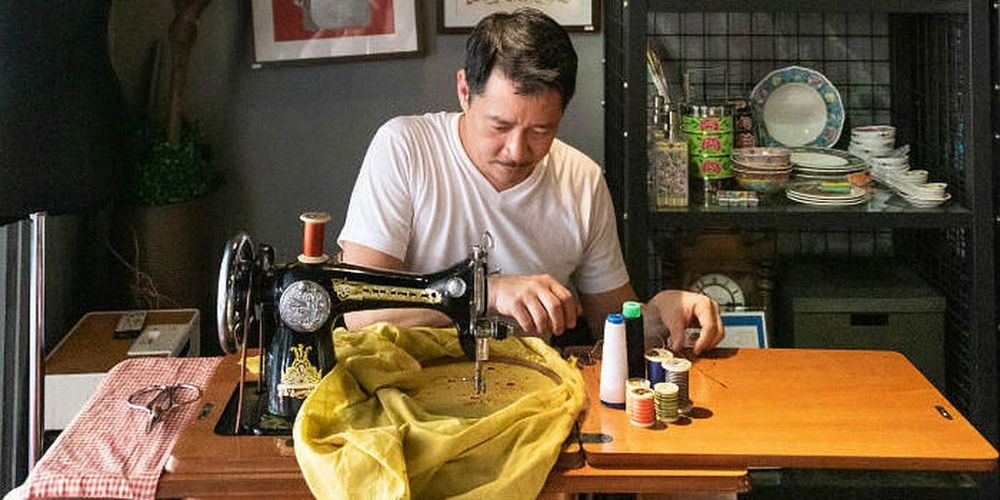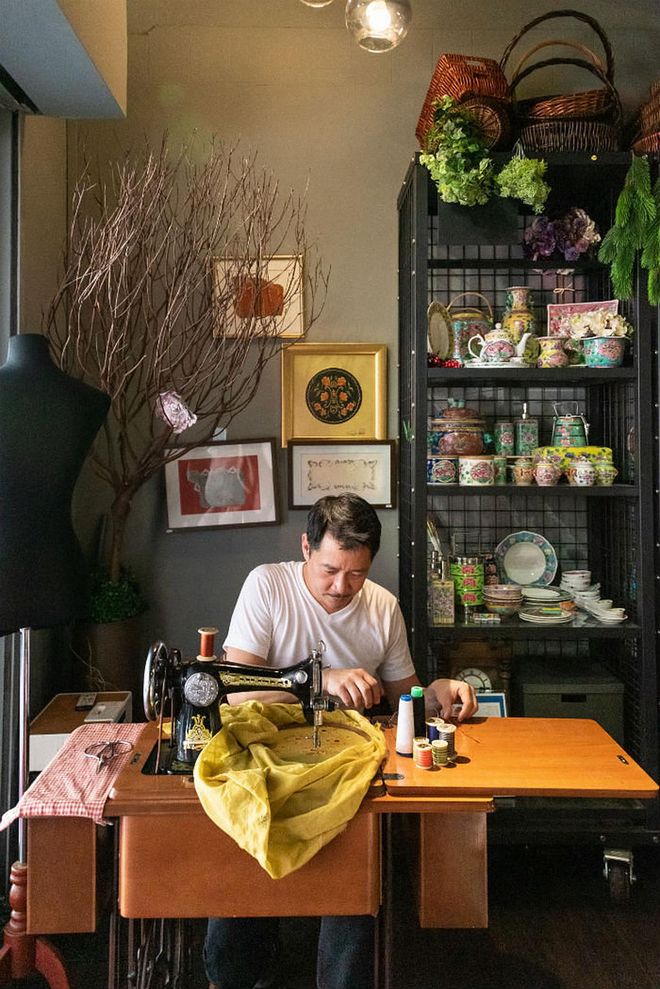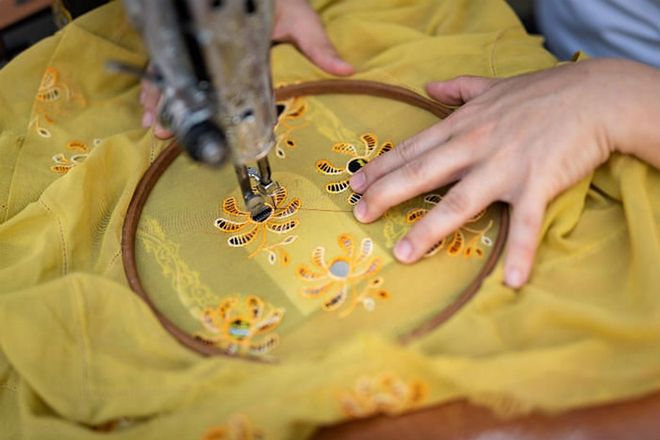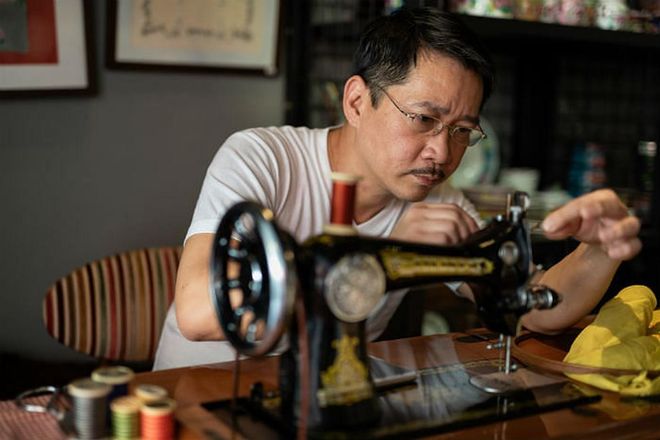Art Against The Odds: Heath Yeo On The Beauty Of Sulam
We chat with the dedicated Sarong Kebaya maker


Photo: Courtesy of Sukit Tor
Heath Yeo Sulam
From the iconic Singapore Girl to local TV series Little Nyonya and Ivan Heng as Emily Gan in Emily of Emerald Hill, the Sarong Kebaya is one garment that has struck a chord with many Singaporeans. Widely worn by local Malay and Straits Chinese women in Singapore and Malaysia in its heyday, the kebaya has been produced in various forms and iterations, including the lace-embriodered (Sulam) Nyonya kebaya that was, and still is, synonymous with the Peranakan community.
Enter Heath Yeo, one of two remaining kebaya makers in Singapore, who has relentlessly honed his craft in the pursuit of passion and heritage preservation. Here, he talks what led him to the art of Sulam (traditional free-motion hand embroidery), the process of kebaya making by hand, and keeping the Peranakan culture and heritage alive.
1) How did your love for the Sarong Kebaya begin, and how did you pick up the skills associated with kebaya making?
It was a gradual process I went through as a young designer back then. I was a Fashion Design graduate from the LaSalle College of the Arts. Upon graduation, I began working with established local designers/brands before embarking on a solo mission to discover the long lost art of embroidery.
My love for the kebaya grew significantly after realising that embroidering with treadle sewing machines is a skill not many know about. I was lucky enough to be privately trained under the tutelage of famed kebaya maker, Mdm Mok of Kim Seng Kebaya, and inherited the skills of Sulam and kebaya making.
2) What has been the most difficult in pursuing this traditional craft? What have you had to sacrifice?
Though I'm familiar with sewing and embroidery machines (be it industrial or auto-mechanical), the process of co-ordinating the legs, hands and eyes at a manual sewing machine is a challenging one. The other challenge is access to raw materials. While fabric and thread are all easily available in Singapore, certain fabric types may be harder to obtain due to the small demand here.
While the craft is painstaking, I don't think it's a sacrifice. It is time well-spent knowing I'm deepening my knowledge and skills in something I'm passionate about. I haven’t thought about giving up kebaya making; I'm curious to see how it would evolve with the changing times.
3) You’re one of two remaining kebaya makers in Singapore. How important is it that the craft is kept alive and passed on to younger Singaporeans?
I think it's important because it's part of our heritage. It's akin to owning a piece of heirloom that has seen cultural and historical growth. I do conduct workshops from time to time to keep the Peranakan culture and heritage alive.
Related article: Art Against The Odds: Keeping Classical Indian Dance Alive In Singapore

Photo: Courtesy of HIEW
Heath Yeo Sulam
4) How relevant do you think the kebaya is, considering fast fashion and the constantly-evolving fashion landscape?
While it's important to understand current trends, the pattern, silhouette and embroidered motifs of the classic kebaya will always be fundamental and relevant.
5) How long does it take you to complete a kebaya from scratch? Could you take us through the process?
It can take up to weeks or even months to complete one. This long process includes the pattern drafting and sewing of the garment after measurements are taken; it is a constant shuffle between the drafting table and the sewing machine. Embroidery design is also part of this laborious process—the design on paper must fit the pattern drafted, before it is traced onto the fabric and embroidered.
Related article: Art Against The Odds: Talking Passion And Preserving Teochew Opera With Tan Wei Tian

Photo: Courtesy of Sukit Tor
Heath Yeo Sulam
7) What are your designs inspired by?
I'm inspired by the geometric shapes of Azzedine Alaia, the intelligent prints of Dries Van Noten, old patterns left by my teacher, trips to Museums, notable works of other artisans and craftsmen, and even a walk in the park.
8) What do consider the most important aspect of kebaya making?
The silhouette of the kebaya is important as it defines the form and fit. The composition of embroidered motifs with auspicious meanings (including peonies, dragons and phoenixes) is equally important.
Related article: 7 Heritage Crafts To Learn Before They Disappear Forever

Photo: Courtesy of Sukit Tor
Heath Yeo Kebaya maker
9) What is the most difficult step when it comes to putting a kebaya together by hand?
The challenge is for the mind to visualise the garment, create balance, unity and proportion, and translate these to precise detailing with manual dexterity.
10) What is your advice for anyone who wants to follow in your footsteps?
Enjoy the craft. Patience is key.
Get a glimpse into the world of sulam with Heath Yeo's exhibition, 'One Machine, One Stitch, One Man' at Gallery II, The Arts House at The Old Parliament from 2-6 October (timings below). The exhibition will showcase handcrafted kebayas and gowns that pay homage to Yeo's mentor, Mdm Mok.
2-5 October, 10am-8pm
6 October, 10am-6pm
Admission is free.